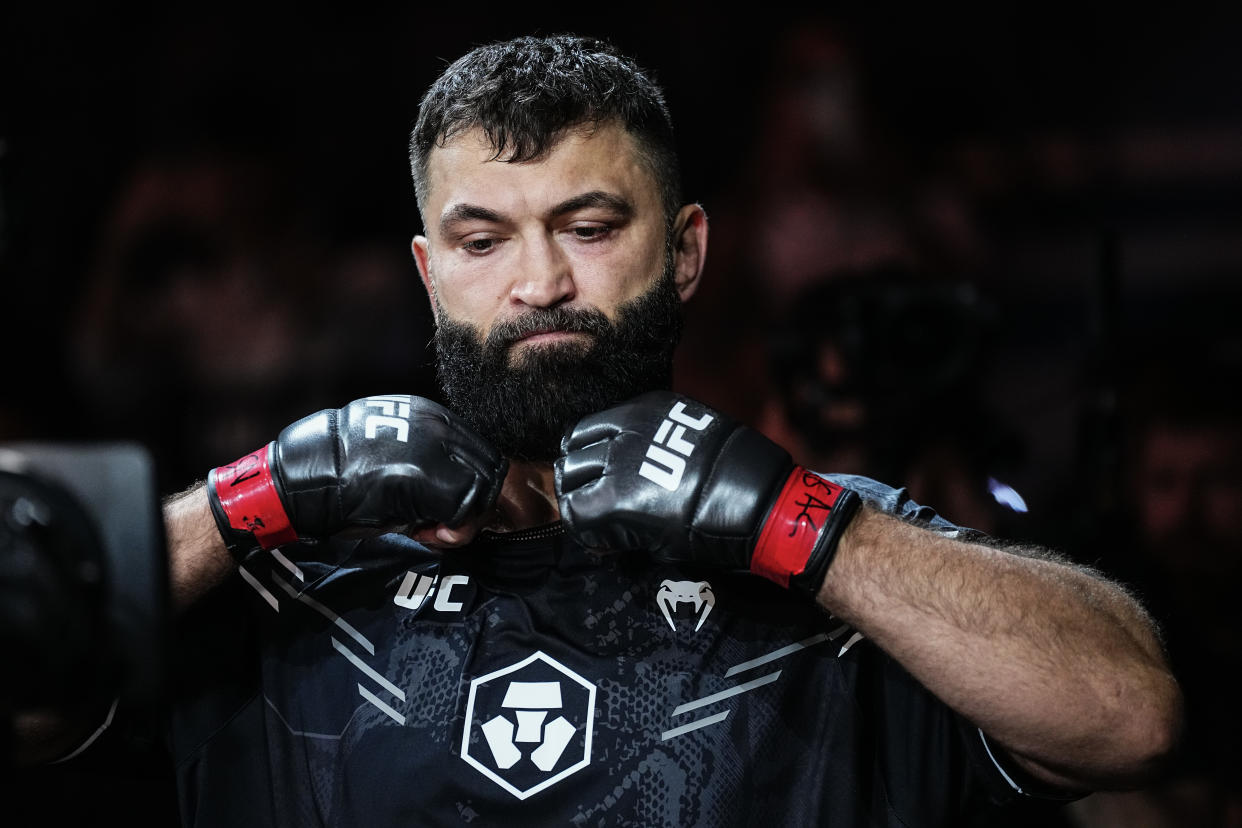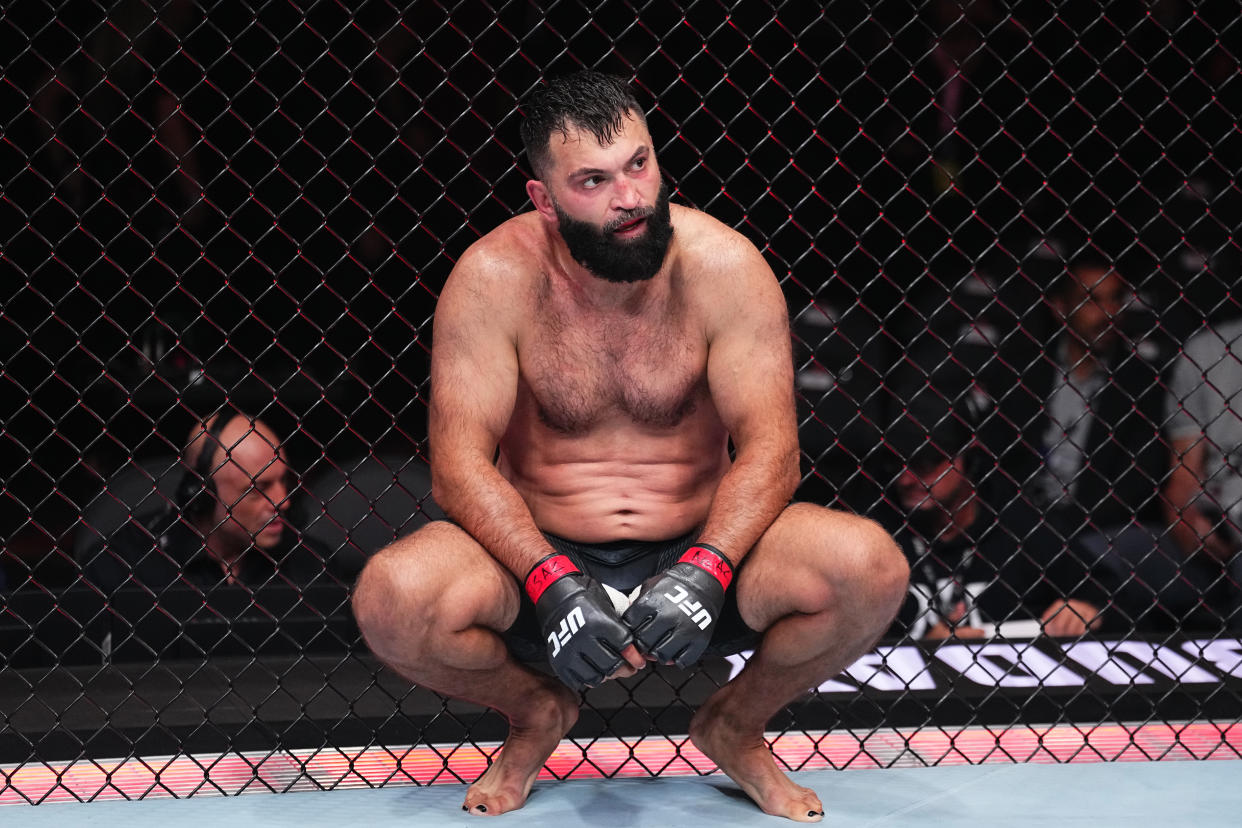After 25 years and a UFC title, Andrei Arlovski deserved a better goodbye

“Yeah, this is Andrei’s last fight.”
That was about the extent of what UFC president Dana White had to say on the topic of former UFC heavyweight champ Andrei Arlovski on Saturday night. A 25-year career in MMA. A total of 18 years in the UFC, spread out over the course of two separate stints. And how it ends is with a split-decision loss to Martin Buday on the early prelims of UFC 303, followed by an offhand dismissal from the boss at the post-fight news conference.
To be clear, when White said it was Arlovski’s “last fight,” he meant with the UFC. Despite being 45 and mired in a four-fight losing streak, Arlovski took to his Instagram after UFC 303 to say that his “chapter in the UFC is closed, but my book is not finished yet.”
Maybe this distinction — finishing out his UFC contract, but not officially retiring from the sport — explains the difference in how Arlovski’s exit Saturday night was treated compared to Michelle Waterson-Gomez’s.
Like Arlovski, Waterson-Gomez also lost a decision on the early prelims. Unlike Arlovski, she got a farewell interview in the cage and an adoring video package devoted to her career as a send-off.
Arlovski, who made his UFC debut when Waterson-Gomez was in high school and won his first title while she was still a teenager, got no such goodbye. If you were watching the UFC 303 broadcast, in fact, you may have even had no idea this was his last fight in the Octagon.
Some of that is understandable. When you exit the UFC on a dreadful final fight, in the midst of a four-fight losing streak (again, Waterson-Gomez had lost five straight, but who’s counting), and without any clear plans to retire, maybe the UFC feels no particular incentive to mark the occasion.
Still, are we really going to act like Arlovski’s career isn’t worth remembering? This is a man who made his pro debut in 1999. Payton Talbott, who shared Saturday night’s UFC 303 card with Arlovski, was about 7 months old at the time. Arlovski would go on to win the UFC heavyweight title in 2005. Other UFC champs around that time include Rich Franklin (middleweight), Chuck Liddell (light heavyweight) and Matt Hughes (welterweight). It’s been well over a decade since the last time any of those guys fought in the UFC.

Just in terms of longevity, Arlovski’s run is incredible. He fought in the UFC for eight years, then went on a wandering warrior tour that included fights in Strikeforce, Affliction, ONE Championship, WSOF (now PFL) and EliteXC. After that, he came back to the UFC. There he stayed for another 10 years. Only once in that most recent span did he fight less than twice a year, and that wasn’t until 2023.
The first UFC event was in 1993. Arlovski had his first pro fight in 1999. This means that for 80 percent of the UFC’s existence, Arlovski has been fighting somewhere, against someone, without interruption. There has never been a single calendar year from his debut to now in which Arlovski hasn’t had at least one fight. His loss to Buday was Arlovski’s 60th pro fight. For perspective, that’s more than the combined total fights of each bout pairing scheduled for the UFC’s next event.
Prefer a different kind of perspective? Arlovski’s first UFC fight was in November 2000. Zuffa bought the UFC from SEG in January 2001. That means Arlovski was with the UFC before Dana White.
But it’s not just the total time in the game that makes Arlovski’s career special — it’s also what he did with it. When Arlovski first showed up in the UFC, he was an anomaly. A big, athletic heavyweight who could move and hit with knockout power and even pull off a submission now and then? This was new. Over the next couple decades he fought essentially every relevant heavyweight from at least three distinct eras of MMA.
Stipe Miocic. Josh Barnett. Fedor Emelianenko. Fabricio Werdum. Tom Aspinall. Francis Ngannou. Tai Tuivasa. Ben Rothwell. Alistair Overeem. Frank Mir. Roy Nelson. Ben Rothwell. Tim Sylvia (a whole bunch of times). And that’s not anywhere even close to a complete list.
Entire careers have started and flourished and ended during Arlovski’s time in this sport. There are UFC greats who are now comfortably retired who hadn’t even made their pro debuts when Arlovski was a UFC champ. To stay this long, at this level, in a sport like this? That’s not an accomplishment so much as it is a minor miracle.
MMA doesn’t always do a great job with its own history. Promoters are incentivized to sell the next event, while the past isn’t so easily monetized. The rate of fan churn in MMA is higher than in a lot of the traditional stick-and-ball sports, so there were surely a lot of people watching UFC 303 on Saturday night who don’t remember a time when Arlovski was a top heavyweight. (He does have five UFC victories since the last time Miocic won a fight, though, and we keep hearing how Miocic absolutely must get the next UFC heavyweight title shot.)
Still, we should at least consider the possibility that an entire lifetime in this sport deserves at least a mention on the way out the door. These kinds of careers, spent entirely at the highest level and spanning six different presidential administrations, aren’t so common that we can afford to ignore them.


